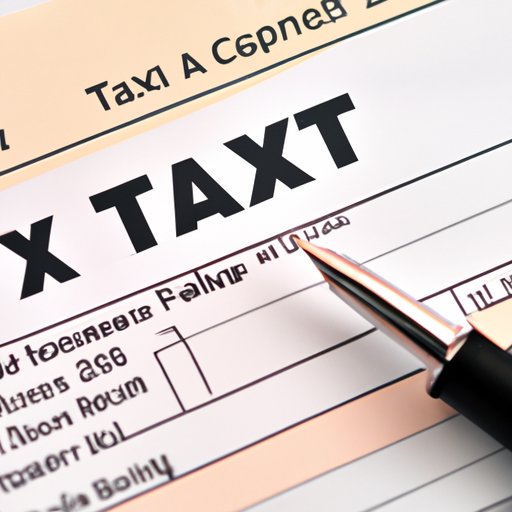
Introduction:
Filing taxes can be stressful, especially if you’re not able to complete them before the deadline. Fortunately, if you need more time to file, you can always opt to file for a tax extension. This article will guide you through the process of filing for an extension, explain why people may need to file for one, and offer tips and tricks for making the process as smooth as possible.
Why and How to File for a Tax Extension:
There are several reasons why people may need to file for a tax extension. For example, you may be waiting for important tax documents to arrive, facing personal or family emergencies, experiencing unusual income fluctuations, or have unexpected schedule conflicts.
Filing for an extension can provide many benefits, including allowing you more time to gather relevant financial information, reducing the risk of mistakes, and avoiding late fees and penalties from the IRS.
To file for an extension, you must submit IRS Form 4868 to the IRS. The form must be filed by the original tax deadline, which is typically on April 15. You can also file electronically or via mail, depending on your preference.
What You Need to Know Before Filing for a Tax Extension:
Before you file for a tax extension, it’s essential to be aware of the deadline for filing: typically, it’s April 15th, although it may vary if you’re living or working abroad.
It’s also crucial to understand the consequences of failing to file for an extension. If you don’t file and pay your taxes by the deadline, you may face steep penalties, ranging from fines to seizure of your assets.
Another common misconception about filing for a tax extension is that it delays the payment of taxes you owe; it only provides additional time to file your returns. As such, you should ensure that you estimate your tax due and make payment at that time to minimize the penalties or interest.
A Beginner’s Guide to Filing for a Tax Extension:
Filing for a tax extension is a relatively straightforward process that can be completed in five easy steps:
Step 1: Visit the IRS website and download IRS Form 4868.
Step 2: Provide necessary personal information, including your name, address, and social security number.
Step 3: Estimate your tax liability and make payment to avoid penalties and interest.
Step 4: Submit the form either electronically or by mail before the deadline.
Step 5: Wait to receive notifications from the IRS verifying your extension.
It’s also important to note that there are several other options available for filing for an extension, such as using tax preparation software or hiring a tax professional to assist you.
Expert Tips for Filing for a Tax Extension:
While filing for a tax extension may seem daunting, there are several tips you can follow to make the process smoother and less stressful.
First and foremost, be sure to estimate your tax liability accurately and pay what you owe before the deadline. It’s also crucial to keep track of the new deadline once you’ve received your extension to avoid missing the new deadline as well.
Additionally, it’s helpful to keep all relevant tax documents, receipts, and statements well organized to reduce the time it takes to submit your tax returns before the new deadline.
The Dos and Don’ts of Filing for a Tax Extension:
To make filing for an extension as positive an experience as possible, it’s important to adhere to some best practices and avoid common mistakes.
One of the most critical things to do is to file your extension paperwork accurately and completely with all the required supporting documents and payments. You should also try not to wait until the last minute to file and always double-check for any errors on the forms before submitting them.
Another key “do” is to seek help from experienced professionals if you’re struggling to file or have complex tax situations. Conversely, don’t avoid filing for an extension if you owe taxes or face other tax obligations; instead, proactively address them and make the most of the extension time period.
Conclusion:
Filing for a tax extension is a smart option for those who need more time to complete their tax returns. By understanding how to file for an extension correctly, estimating your tax liability accurately, and following best practices, you can avoid costly penalties and interest from the IRS.
Remember, if you have any questions or need help during the process, you can always seek guidance from tax professionals or the IRS. Don’t let the stress of an impending tax deadline get in your way—take advantage of an extension and file your taxes on your terms.




